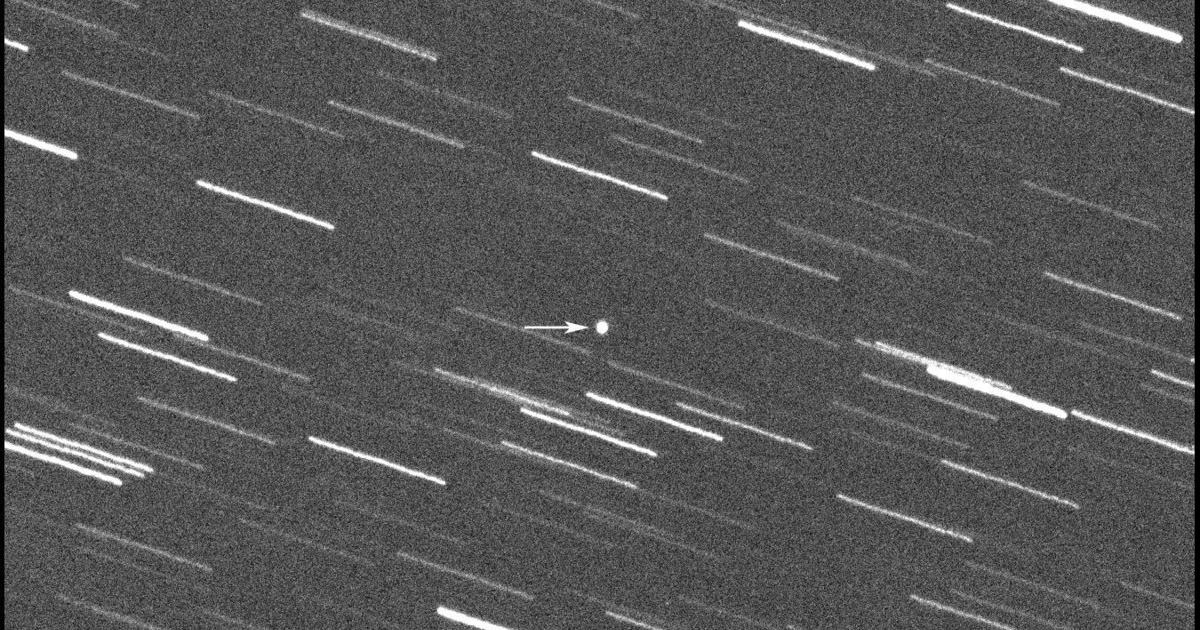Cape Canaveral, Fla. — An asteroid as big as a skyscraper and stadium will pass within 1.7 million miles of Earth on Friday.
NASA says it will happen around 9:41 a.m. EST.
There’s no chance of it hitting us since it will pass seven times the distance from Earth to the moon, but NASA still labels it “potentially hazardous,” according to its Virtual Telescope Project, which will livestream the event.
Virtual Telescope Project via AP
People won’t be able to see it with their own eyes but NASA has a virtual asteroid tracker that shows where asteroids are in real-time.
NASA’s Center for Near Earth Object Studies estimates the space rock is between 690 feet and 1,575 feet across. That means the asteroid could be similar in size to New York City’s Empire State Building or Chicago’s Willis Tower. NASA refers to it as “stadium size.”
NASA gives the “potentially hazardous” label to objects that pass within 4.6 million miles of Earth and are bigger than 492 feet, according to Forbes magazine.
Discovered in 2008, the asteroid making Friday’s appearance is designated as 2008 OS7.
It won’t be back our way again until 2032, but it will be a much more distant encounter, staying 45 million miles away.
The flyby is one of several encounters this week: Three much smaller asteroids also will harmlessly buzz Earth on Friday, no more than tens of yards across, with another two on Saturday. On Sunday, an asteroid roughly half the size of 2008 0S7 will swing by, staying 4.5 million miles away.
According to NASA, an asteroid is A relatively small, inactive body orbiting the Sun. Asteroids are typically composed of rocky, dusty, and metallic materials. Most orbit within the main asteroid belt, between the orbits of Mars and Jupiter, but some follow paths that circulate into the inner solar system (including near-Earth asteroids), while others remain outside the orbit of Neptune.
Thanks for reading CBS NEWS.
Create your free account or log in
for more features.


